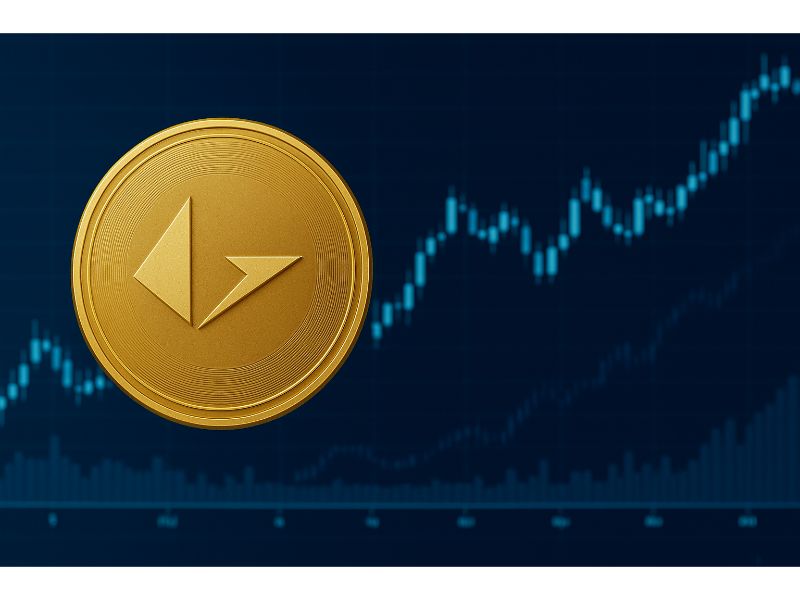
As Ethereum struggles with high gas fees and slow transaction speeds, more people are considering Layer 2 solutions. These technologies aim to scale Ethereum without compromising on security. At the same time, decentralized exchanges (DEXs) are gaining ground, offering an alternative to traditional centralized platforms.
Loopring is one of the key projects at the intersection of these two trends. It offers a protocol that supports fast, secure, and affordable decentralized trading. Its native token, LRC, is crucial in making the whole system work.
This article breaks down what LRC is, how Loopring functions, and why it matters in the wider DeFi space.
What is LRC Coin?
LRC is the utility token that powers the Loopring protocol. It runs on Ethereum as an ERC-20 token and supports the operation and security of Loopring’s decentralized exchange system.
Quick Facts:
- Token symbol: LRC
- Blockchain: Ethereum
- Launched: 2017
What is Loopring?
Loopring is an open-source protocol for building decentralized, non-custodial exchanges. It allows anyone to create or use a DEX without giving up control of their funds.
Instead of relying on Ethereum’s base layer for every transaction, Loopring uses something called zkRollup. This lets it handle trades more efficiently by batching multiple transactions into one. The result: faster speeds and lower fees.
Loopring’s goal is clear: enable scalable, secure trading without the need for a middleman.
How Does LRC Work?
zkRollup Technology:
zkRollup bundles thousands of transactions off-chain and submits them to Ethereum in a single proof. This reduces congestion and cost while keeping everything secure.
What LRC Does in the Loopring Ecosystem:
- You can stake LRC to support network security and earn rewards.
- You can use it to get trading fee discounts on the Loopring DEX.
- You can use it to vote on protocol updates and decisions.
Key Features of LRC
Scalability:
Loopring can handle over 2,000 trades per second thanks to Layer 2.
Low Fees:
Trading on Loopring costs much less than using Ethereum-based DEXs.
Non-Custodial:
Users always keep full control of their assets. Loopring doesn’t hold your funds at any point.
Security:
Even if Loopring goes offline or gets hacked, zkRollup keeps your assets safe.
Use Cases of LRC
- Staking: Users stake LRC to earn rewards and help secure the protocol.
- Governance: Token holders vote on protocol changes, upgrades, and other decisions.
- Fee Discounts: You can use LRC to reduce trading costs on the Loopring platform.
LRC Tokenomics
Max Supply: 1.375 billion LRC
Distribution:
The token was distributed through an ICO, team allocations, and reserves.
Burn Mechanism:
Loopring may burn a portion of fees collected in LRC, which reduces the total supply and can support long-term value.
How Does LRC Compare to Other DEX Tokens?
LRC stands apart from tokens like UNI (Uniswap) and SUSHI (SushiSwap) because it is tied to a Layer 2 protocol. While Uniswap and Sushi are still working on Layer 2 integration, Loopring has already built its DEX on zkRollup. This gives it an edge in scalability and cost-efficiency.
Future Outlook
What’s Next for Loopring:
- Continued updates to its mobile wallet and DEX features.
- A growing push to make Layer 2 DeFi more user-friendly and accessible.
Market Potential:
As Ethereum continues to scale, the demand for fast, low-cost alternatives will grow. Loopring is positioned to meet that demand.
LRC is more than just another token. It helps secure and run a decentralized trading protocol that offers real solutions to Ethereum’s current limitations.
Loopring’s use of zkRollup gives it a head start in the race to scale DeFi. If the trend toward Layer 2 continues, and it likely will, Loopring and LRC could play a much bigger role in the ecosystem.
That said, investing in any crypto asset comes with risks. Always do your research before making a decision.